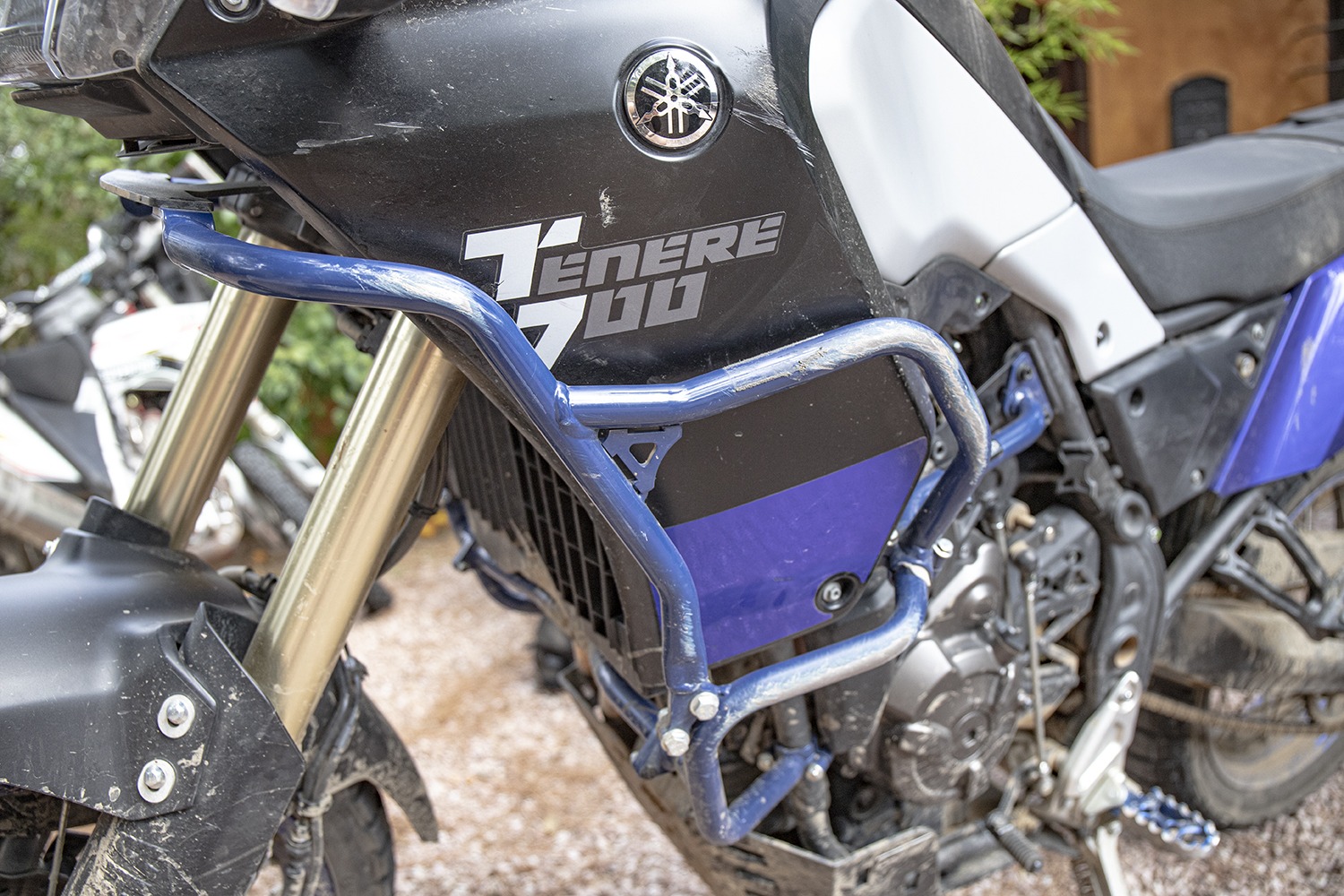The drop test results are backing up our claims – Yamaha Tenere 700

Just a few months ago we posted our 7th crash bars drop test video. It happened to be a Yamaha Tenere 700.
The results were obvious because the bike escaped with zero damage as we torture tested the crash bars. Video below:
Well, if somebody was looking to criticize our crash bars test then it would be about the pre-set environment as opposed to a real trail crash scenario.
Eventually those real crashes begin to come. It’s literally impossible to avoid crashing or just “laying down” our bikes, especially in off-road conditions.
There’s a gorgeous blue Tenere 700 for example. Its rider was cruising on a wide gravel road with some hairpin and downhill turns. After a few hours in the saddle tackling dual and single tracks one can easily get fatigued. Add some summer heat to the equation.
In this case the rider’s attention was elsewhere and in one of those tricky hairpin turns which featured a significant drop as well as well as rocks and thick dust, the front tires simply washed out. No bones broken. Bruises, yes. Minor ankle injury, check. A couple of days of healing, icing, rest and the rider was back in the saddle.
But how did the Tenere 700 handle the crash? The proof of the pudding is in the eating, they say.
Considering that this Tenere was not equipped with a pair of aftermarket hand guards and pannier racks, the impact purely affected the crash bars only. Nothing was providing relief whatsoever for our crash bars!
The signs of wear and tear are obvious. From top the to bottom, the crash bars took a ton of impact. Let’s checkout some close ups.
The last two photos are the tell-tale signs of just how gnarly the ground was and roughly how much the bike slid. Unfortunately there are some scratches near the Yamaha logo but that could have been saved by a decent set of aftermarket hand guards.
Extending the crash bars any higher could have added more flex to the overall structure which can be easily compromised by such impact. The result would be our tubing pressed against the plastic panel or worse yet, punched. Hence we keep our tubing a bit further down low to flex just enough to absorb impact while maintaining its distance between the the side panels.
Let’s see some more shots.
Just compare the last two photos. See the clamp’s position? In photo #2 above the clamp is sitting slightly closer to the centre of the bike, while in photo #3 above it’s pushed back further out. Photo #2 shows the position of the clamp right after the crash. Instead of the bar alone bending in order to absorb impact, the clamp moved a bit as well before coming to a complete stop as it reached the end of its track.
To sum up this part: during such an impact, crash bars or some of their parts typically bend in order to absorb impact. Our Tenere 700 upper crash bars might bend a little or simply the “C” clamp might just shift a little as well. This wasn’t the case during our drop test but as I stated earlier, the crash of the blue T7’s owner may have been even more serious than our test. Unfortunately at her ankle’s expense..
Some more photos:
That’s about it. It was a heck of a crash with the obvious signs of impact and we’re stoked that our crash bars did so well. Just as “advertised”. The rider is okay now and back in saddle as well!










